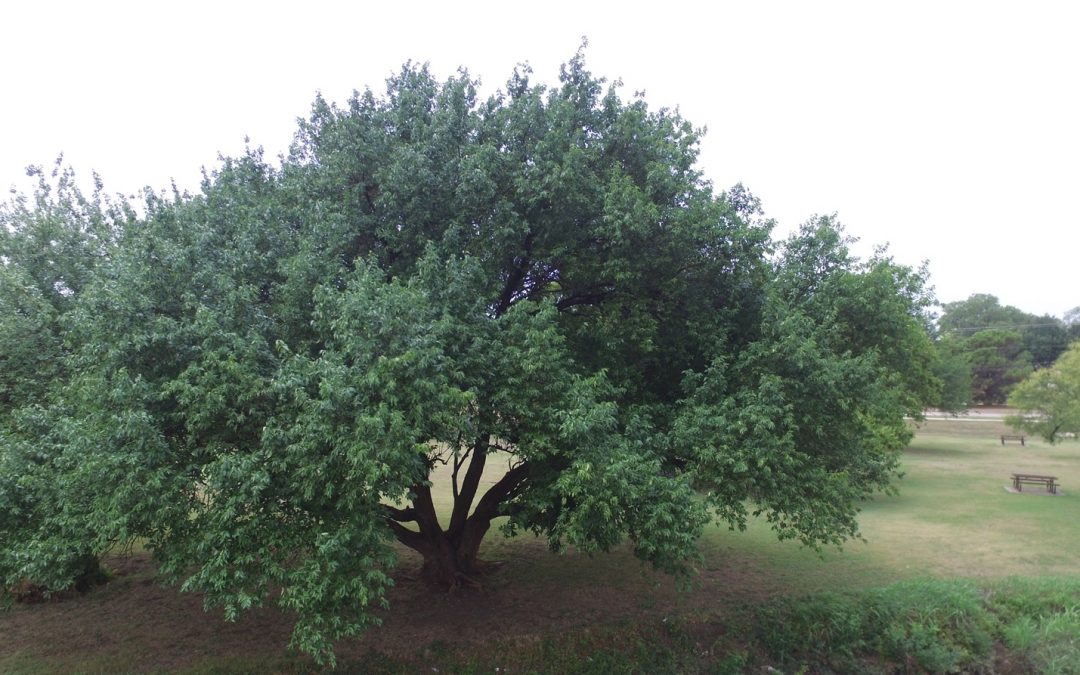Unique Trees of North Texas:
Bois d’arc
(Maclura pomifera)
By Wendy Pappas
The Bois D’arc (aka: Osage Orange hedge apple, horse apple, “bodark”, monkey ball, bow-wood, yellow-wood and mock orange tree) originally had a native range of river areas in Oklahoma, Texas, Arkansas and in the Blackland Prairies and Post Oak Savannas. The native range overlapped the range of Osage tribe, which gives the tree one of its many names. Almost all of the names relate to the interesting fruit or strong wood. It has been naturalized throughout the United States and Canada.
Large Osage orange located in Bowie County. The spreading form seen here is common for Bois d’arc trees.
Osage orange has an adult height of 30-50ft and is often wider than it is tall. The leaves are 3-5 inches long and 2-3 inches wide, with an oval shape that ends in a slender point. The leaves are alternately arranged on the thorny branch. They are a dark shiny green on top and paler on bottom, turning yellow in the fall. The tree has a characteristic arching branch pattern and noticeably colorful bark which aid in identification.
This tree is known for its unusual fruit, which some producers are growing for bioproducts. The fruit looks like a thick orange but is yellow/green on the outside and has more pronounced bumps than an orange. The fruit produces a milky fluid and woody pulp. Even though the fruit resembles an orange it is more related to the mulberry family. Although it is not poisonous, the fruit is not usually eaten by animals or humans because of its hard-dry texture. Still, squirrels sometimes eat the seeds as food. Osage orange is a dioecious species, which means only female trees will produce fruit.
Bois D’arc are hardy to most of the United States and can grow in many different environments but prefer fertile, deep soil. They can be used for hedge rows as a natural barrier to cattle, the wood is a strong and dense which makes it great for fence posts, tool handles, treenails, and even bows (hence the name given by French explorers). The yellow-orange color of the wood makes it attractive for many different uses. Osage orange typically lives about 75 years with a moderate growth rate of about 1 foot per year.
The state champion is located on Oak Street in the City of De Kalb. The circumference is 267 inches and it is 62 feet tall with a spread of 88 feet.
In the Cross Timbers, there are several large specimen trees. Vandergriff Park in Arlington has several large Osage orange along Johnson Creek, such as the tree pictured at the top of the page and shown on this map:



